What is Ornamental Grass? Technically, it is any grass grown as a decorative or “ornamental” plant. These versatile, hardy grasses can provide both color and movement in the garden. They hold up well against pests, diseases, and severe weather. No matter what you are looking for, there is an ornamental grass to fit your needs.

Ornamental grasses are grouped by how they grow, Clumpers, and Runners. The clumpers grow in a tight group from the center out because of how the roots grow in a ball. The runners, because of their root structure (long rhizomes) spread out as a turfgrass would. There is a third group that fits both categories. Kinda. Grasses with short rhizomes will grow in clumps but do creep very slowly. If you would like a super technical description click this link for Lewis Bamboo. While the article is about Bamboo, it is the same for almost all grasses.
Runners are more aggressive than clumpers and some can become invasive if not maintained. No matter which you do decide on, many kinds of grasses have thousands of seeds that look beautiful on the stem, but will spread like crazy in the wind and can really take over, so think before you plant.
Did you know you can buy all kinds of plants on Amazon? Click here to see many of the grasses described below. As an Amazon affiliate, we may earn a small commission from purchases.
The Clumpers
Fountain Grass: Zones 4-9, Herbaceous, Full Sun

Produces a clump of narrow, half-inch shiny green leaves that fade to golden yellow in the fall. Beautiful fox-tail-like flower spikes in tan, purple, or pink, are early bloomers and last from late summer through the fall.
Pictured Hameln Fountain Grass
Image Americanmeadows.com
Quaking Grass: Zones 4-10, Herbaceous, Partial to Full Sun
Also known as Rattlesnake grass because of the shape of its tiny blooms, Quaking grass sways in the breeze and makes a soft rustling sound. This tidy clumping grass can reach 8 to 12 inches tall and looks exceptional in a garden with a more wild style.

Little Bluestem: Zones 3-9, Perennial, Full Sun
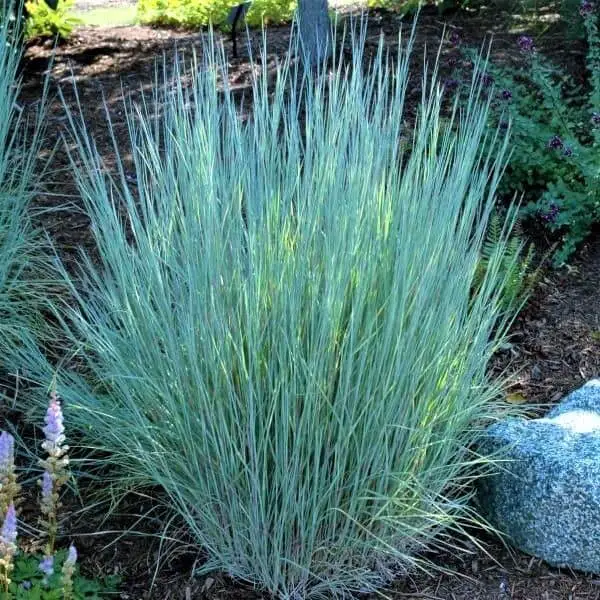
This grass has slender bluish stems in summer that will turn a stunning mahogany-red in the fall and winter. Its fuzzy white seeds are popular with birds in the winter. Little Bluestem forms very dense mounds 18-24 inches tall, its close relative Big Bluestem can get up to 12 feet tall.
Image Nature Hills Nursery
Ornamental Millet: Zones 7-11, Perennial, Full Sun or Part Shade
Ornamental Millet Grass is derived from ordinary millet, an ancient grain from Africa and India. These hybrids have a variety of lovely colored foliage. Several shades of purple as well as bright green, all with gorgeous seed spikes. The spike can grow 8 to 12 inches tall and the birds will love you for planting them. Purple Millet looks particularly nice when planted near orange or yellow flowers.
Pictured Copper Prince Millet

Image Panamseed.com
Blue Oat Grass Zones 4-9, Evergreen, Full Sun
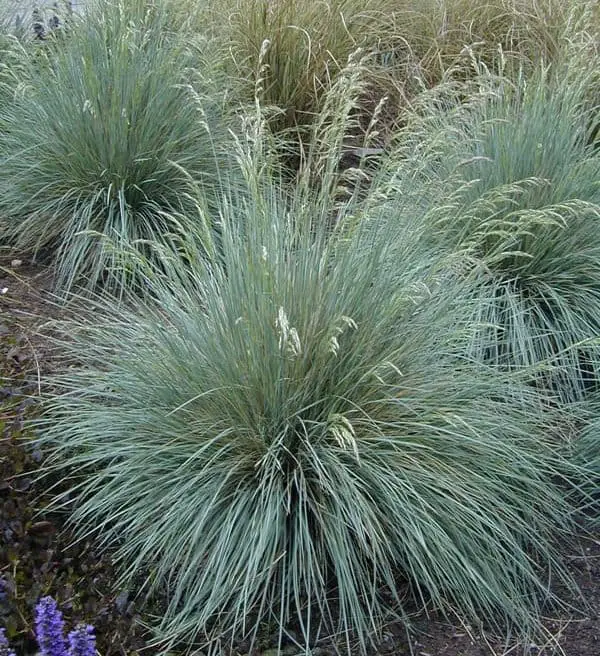
This blue-green grass has a silvery cast to it and gets brown feathery flowers from June through August. Blue Oat grass grows roughly 18 to 30 inches tall. If you plant it near darker green plants it creates an eye-catching contrast.
Image Plantsforhome.com
Pampas Grass: Zones 5-10, Evergreen, Full Sun
This very impressive grass can reach 8 to 9 feet tall when its feathery flower heads are in bloom. While the flowers, which come in white, pink, and purple, are soft to the touch, the blades are very sharp and serrated so handle them with care. In some areas where Pampas grass is not native, it has become invasive and has even been banned in many places. It can also be a fire hazard when dry due to its large size.
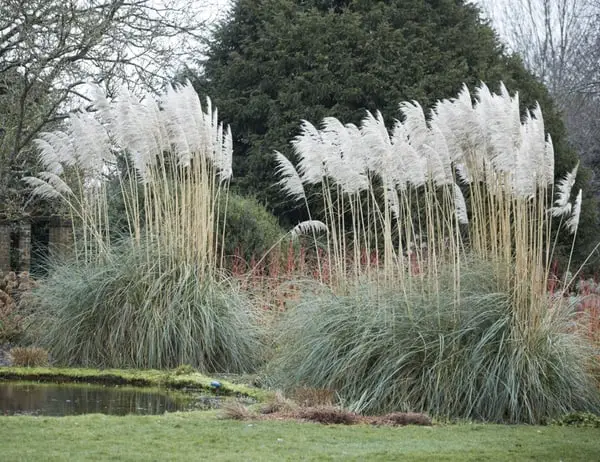
Image Gardenista.com
Mexican Feather Grass: Zones 7-10, Evergreen, Full Sun
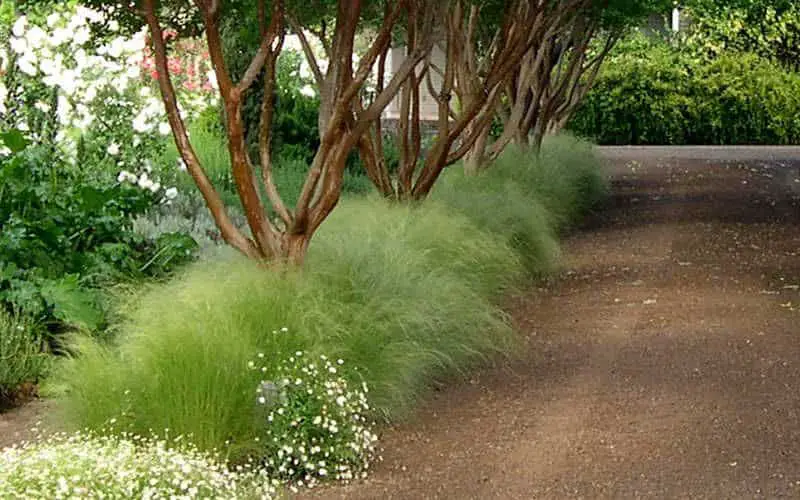
A finely textured grass with wispy, flowing, lime-green foliage that billows in even the slightest breeze. Mexican Feather sure is a beauty. A beauty that needs care or in just a few short years it can easily take over. It produces thousands of seeds that spread fast.
Image Wilsonbrosgardens.com
Blue Fescues: Zones 4-9, Evergreen,
There are several popular varieties of Blue Fescues commonly used in gardens. This tidy blueish grass stays in easy little clumps and grows long flower-tipped stems from May through June. Looks really nice in a rock garden or other less formal garden.

Image Lowes.com
Foxtail Barley: Zones 4-10, Evergreen, Full Sun to Partial Shade
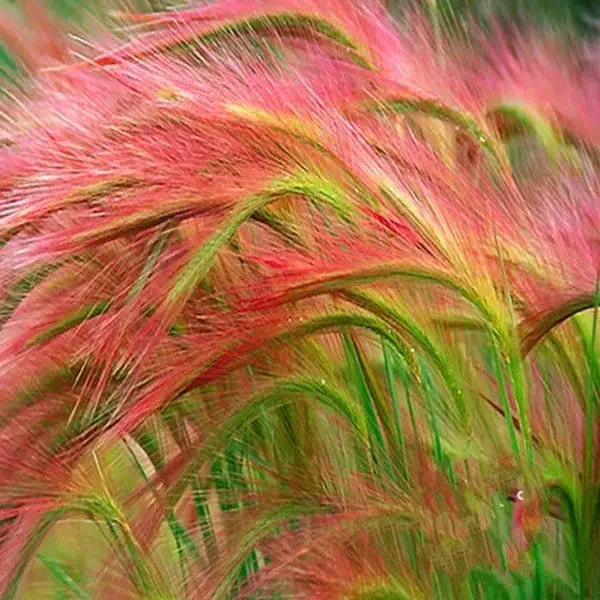
This beautiful swishy grass has feathery flower spikes that start out green but the tips are shades of purple, and pink fading to tan as the grass matures Foxtail Barley is a short-lived evergreen so it will only be around for a few years. It has many seeds though, so don’t be surprised if it sprouts up somewhere else. It’s a fabulous choice for decorating borders, containers, rock gardens, and flower beds.
image Jackseeds.com
Tufted Hair Grass: Zones 3-9, Semi-Evergreen, Full to Partial Sun
One of the few ornamental grasses that does well in part shade. This is a dense clumping grass with dark green leaves. In early summer, it will get purplish-green to golden-tan feathery panicles* on stems that can reach 3 feet over the foliage. Enjoy as they sway gracefully in the breeze well into winter. For best growth, cut back old stems in early spring, before new growth begins.
*Panicles are a loose branching cluster of flowers, as in oats.

Image Genevagardenclub.com
Fiber Optic Grass: Zones 8-11, Evergreen, Full Sun to Partial Sun
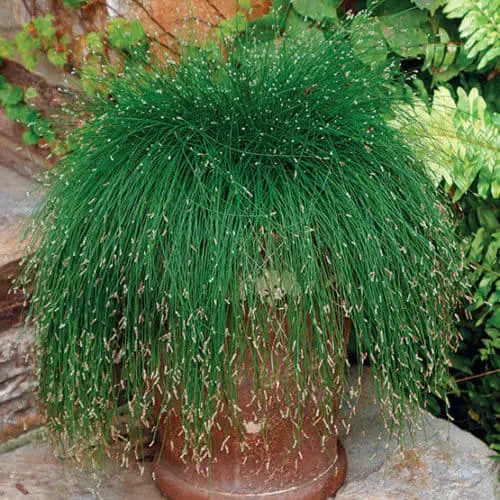
While Fiber Optic Grass is technically a sedge and not a grass, it’s so cool looking I had to include it. The long slender foliage has these tiny little flowers at the tip that make it look like fiber optic cable. Its unique look adds interest to both gardens and planters.
Image Finegardening.com
Feather Reed Grass: Zones 4-11, Deciduous, Full Sun
This is the most popular of the ornamental grasses. Feather Reed Grass can get as tall as 5 feet. It has dense feathery stalks that are reddish brown in spring and turn a rich golden color in fall. Some varieties even have a pinkish or purplish hue. This is a great grass for adding vertical interest to the garden.
Pictured Karl Foerster Feather Reed
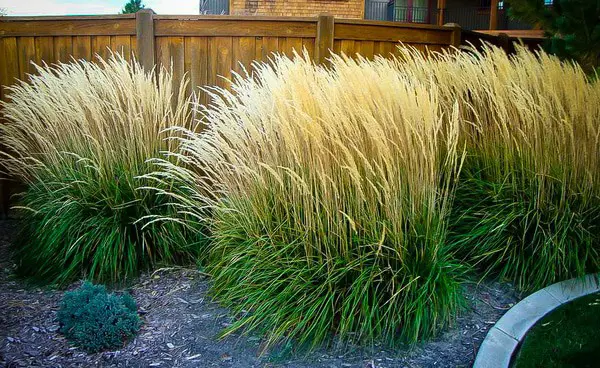
Image Thetreecenter.com
The Runners
Cordgrass: Zones 8-11, Evergreen, Full Sun
If you live near an ocean or wetland, you know cordgrass. This dense grass grows in marshy areas and loves salty water. Birds thrive in it. Most of us will never need or want to plant this grass, but if you live by a beach or marsh and have a problem with erosion Cordgrass will help prevent further erosion.
Pictured Sand Cordgrass
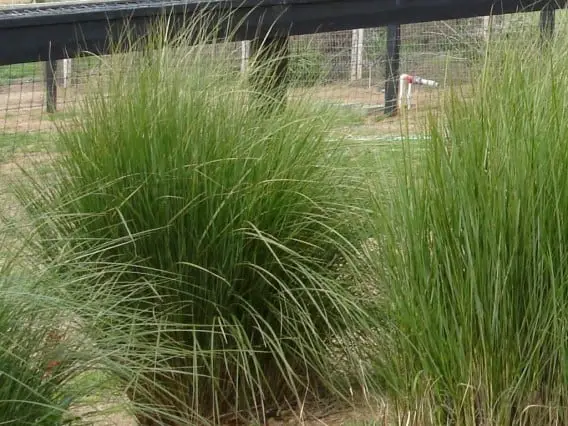
Image Greenmeadowgrowers
Japanese Blood Grass: Zones 3-9, Evergreen, Full Sun, Partial Sun
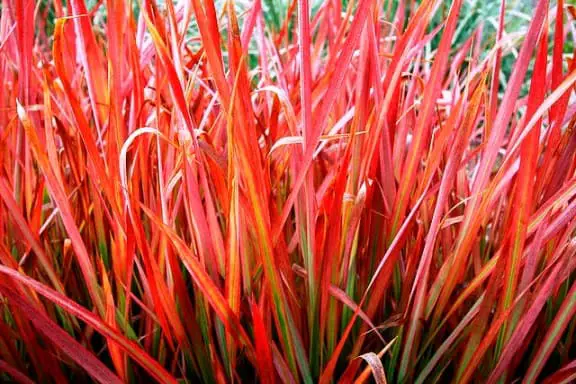
One of the most striking of the grasses on this list. The tips of the blades start out a light pink in spring and become a bright crimson by Fall. The green version of this plant is highly invasive so be careful when purchasing it. The red is usually sold as Red Baron or Rubra. If the grass doesn’t get enough sunlight it can revert to green so definitely plant it in a bright sunny spot. This grass is not as aggressive in cooler climates.
Image Wikilawn
Giant Cane Grass: Zones 6-11, Deciduous, Full Sun
Google Giant Cane or Giant Reed and everything you find will be about the invasiveness of this grass. It’s what reeds are made from for woodwind instruments. Also used in fishing rods and to make baskets. If you’re thinking of getting Giant Cane Grass, I suggest visiting the U.S. Department of Agriculture website for more info.
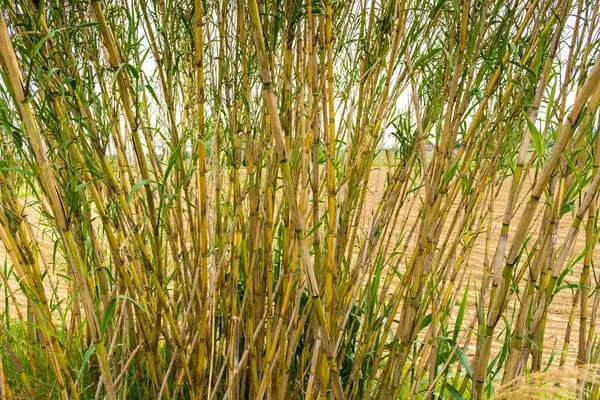
Hardy Running Bamboo: Zones 5-9, Evergreen, Full Sun, Partial Shade
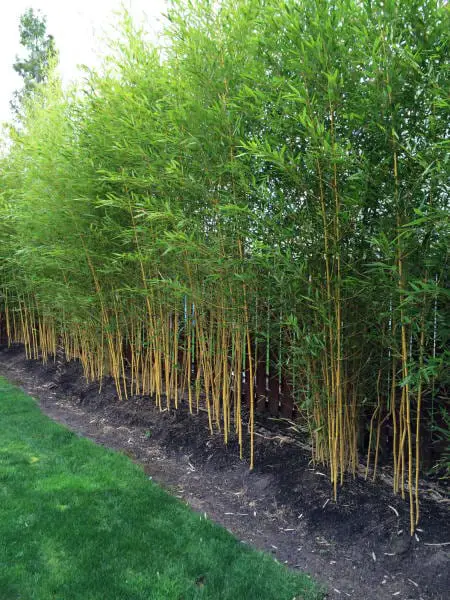
Cold hardy Bamboos are usually runners while tropical Bamboos are clumpers. Running Bamboo will add a tropical vibe to your backyard. Just be smart and put it in a planter so it doesn’t take over the neighborhood. Also, check with your local town because it is banned in many neighborhoods. If you’re interested in cold hardy clumping Bamboo check out this post from Bambu Batu, I found it very helpful.
Image photo copyright: Noah Bell, Bamboo Garden, 2014
Blue Dune (Lyme) Grass: Zones 4-9, Semi-Evergreen, Full Sun, Partial Sun
Don’t let its clumping appearance fool you, this grass is a runner. Blue Dune or Lyme grass maintains its blue color almost all through the growing season, even longer in milder climates. It’s great for erosion control but also looks good in a planter or rocky garden. The flowers of this grass attract butterflies but the foliage is deer and rabbit-resistant.

Image dan.kristiansen via Flickr.
Ribbon Grass: Zones 2-6, Evergreen, Partial Sun
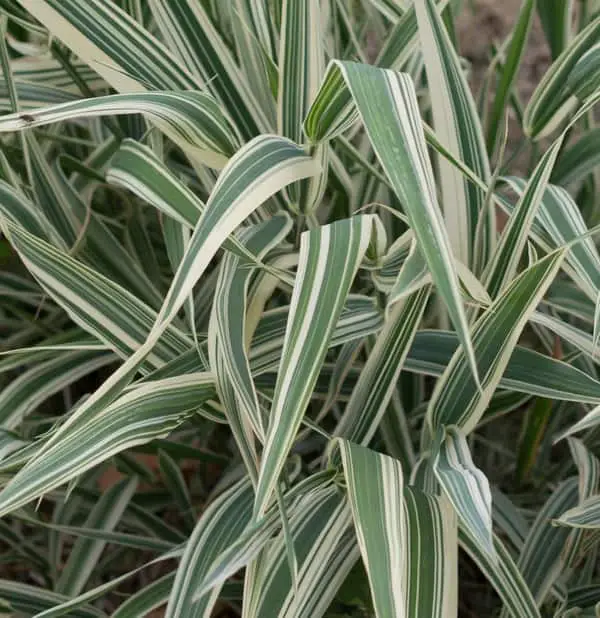
Ribbon grass is one of the prettiest running grasses. It has variegated leaves of white and green and some varieties will even get a pink tint. If planted in a shady area it tends not to run as much. But definitely think before you plant and check local ordinances in case it’s outlawed in your area.
Image F.D. Richards via Flickr.
The Combos
Japanese Forest Grass (Hakone): Zones 4-9, Herbaceous, Partial Shade to Partial Sun
This pretty grass forms flowing mounds and is one of the few ornamental grasses that does well in the shade. It has bright yellow-gold foliage in partial shade, but in full shade, the color fades to lime green. The color washes out to a creamy white when grown in full sun in cooler summer climates.
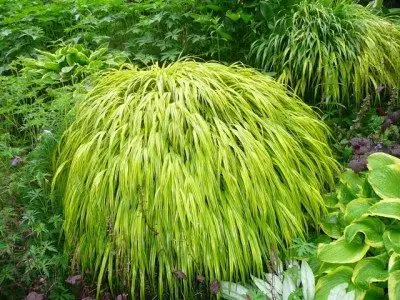
Image Megan Hansen
Switchgrass : Zones 3-9, Herbaceous, Full Sun, Partial Sun
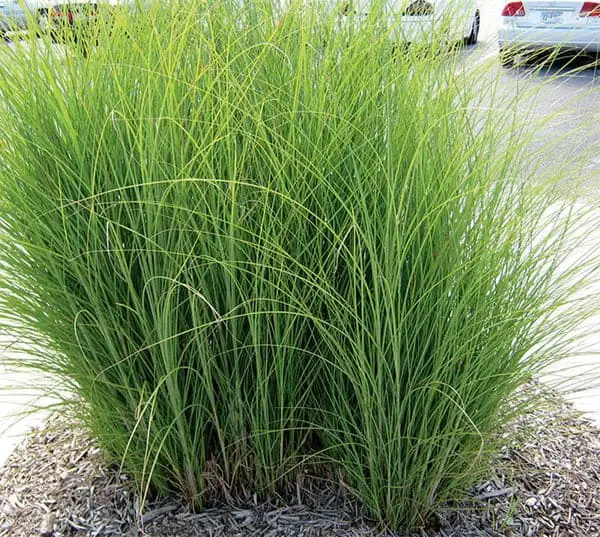
Switchgrass has a fairly upright form and gets a wispy look when in seed. It has green leaves in season. The fall color is golden, then fading to beige for winter. It will get tiny pink flowers in summer. Switchgrass can get as tall as 8 feet high and is a great addition to the garden. Like most tall grasses it can be a fire hazard in extremely dry conditions.
Image Banglore Mirror
Prairie Dropseed Grass: Zones 3-8, Herbaceous, Full Sun
Prairie Dropseed Grass forms cascading tufts of emerald-green foliage with airy, corn-scented seed heads. It will get pink and brown flowers and turns a pretty wheat color in the fall. It’s heat and drought-tolerant so it makes a great choice for tough, dry sites. This grass can take about 5 years to become fully established so don’t be in a rush.

Image Growjoy.com
Indian Grass: Zones 2-9, Herbaceous, Full Sun to Partial Shade
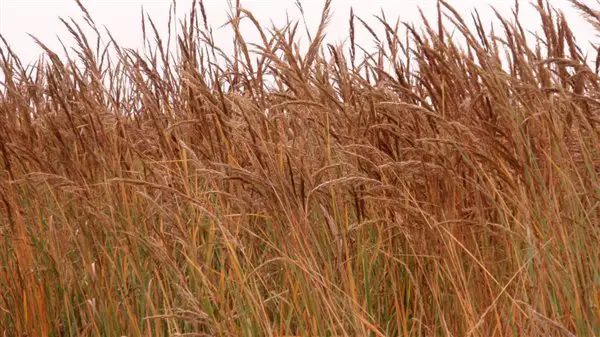
Birds, deer, and most other wildlife love Indian grass, so don’t plant it unless you’re looking to feed the animals. This is a warm-season grass, so its most active growth occurs in summer. It has broad blue-green blades and large, plume-like, soft, golden-brown seed heads. It remains standing in winter for year-round beauty.
Image Stock Seed Farms
Sweet Flag Grass: Zones 6-9, Herbaceous, Full Sun to Partial Shade
The leaves of Sweet Flag Grass are typically light green to golden-yellow in color, with small greenish-yellow flowers on spikes in spring and early summer, followed by red berries. When crushed, the leaves have a sweet-spicy aroma. This aquatic grass is good for around ponds and other bodies of water.

Image Garden.org
I can’t say enough about the versatility of ornamental grasses. They provide amazing texture, motion, and architecture to the landscape. The tall ones not only provide vertical interest but can also create living privacy screens and the small ones look great in any setting. From rock gardens to garden borders, there is an ornamental grass that’s going to meet your need.
Note: Not all the grasses in this article are ornamental grasses by definition, but they are all used as ornamental grasses.

